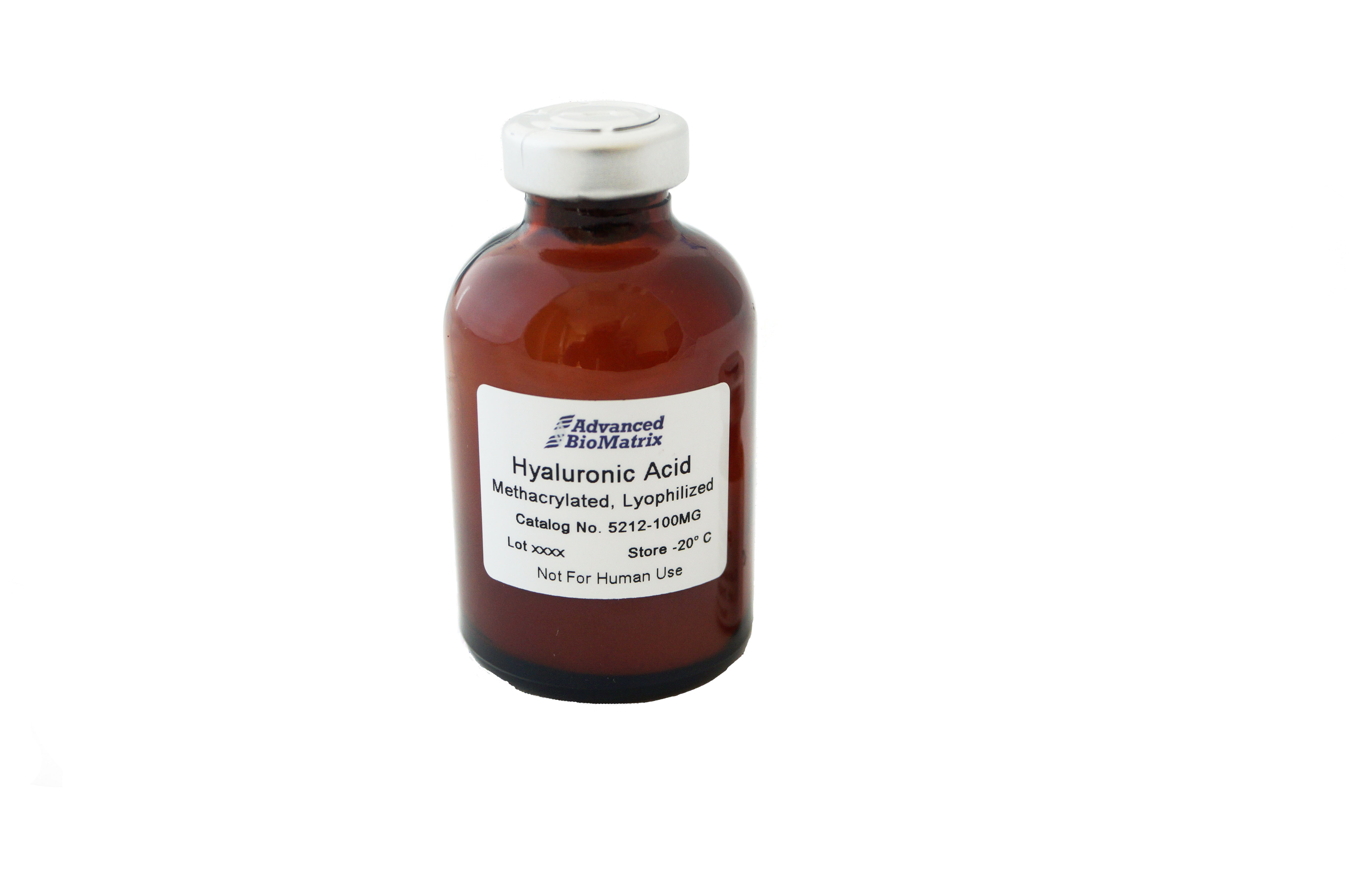Enhancing Stem Cell Culture with Hyaluronic Acid
08/04/23
Stem cell research has revolutionized the field of regenerative medicine, offering the potential to repair and replace damaged tissues and organs. To harness the full potential of stem cells, researchers require a suitable environment that mimics the physiological conditions found in the human body. This is where HyStem and PhotoHA hydrogels, based on hyaluronic acid (HA), come into play.
The Importance of a Physiologically Relevant Matrix
Stem cells are highly sensitive to their microenvironment, and the matrix in which they are cultured plays a crucial role in their growth and differentiation. Traditional two-dimensional (2D) cell culture systems fail to replicate the complex three-dimensional (3D) architecture and biochemical cues present in native tissues. This limitation has led researchers to explore 3D culture systems that better mimic the in vivo conditions.
HyStem and PhotoHA hydrogels offer a physiologically relevant matrix for stem cell culture. Hyaluronic acid, the main component of these hydrogels, is a naturally occurring glycosaminoglycan found in various tissues. It contributes to tissue hydrodynamics, cell movement and proliferation, and cell surface receptor interactions. With its ability to retain water and provide structural support, hyaluronic acid is an ideal candidate for creating a biomimetic environment for stem cells.
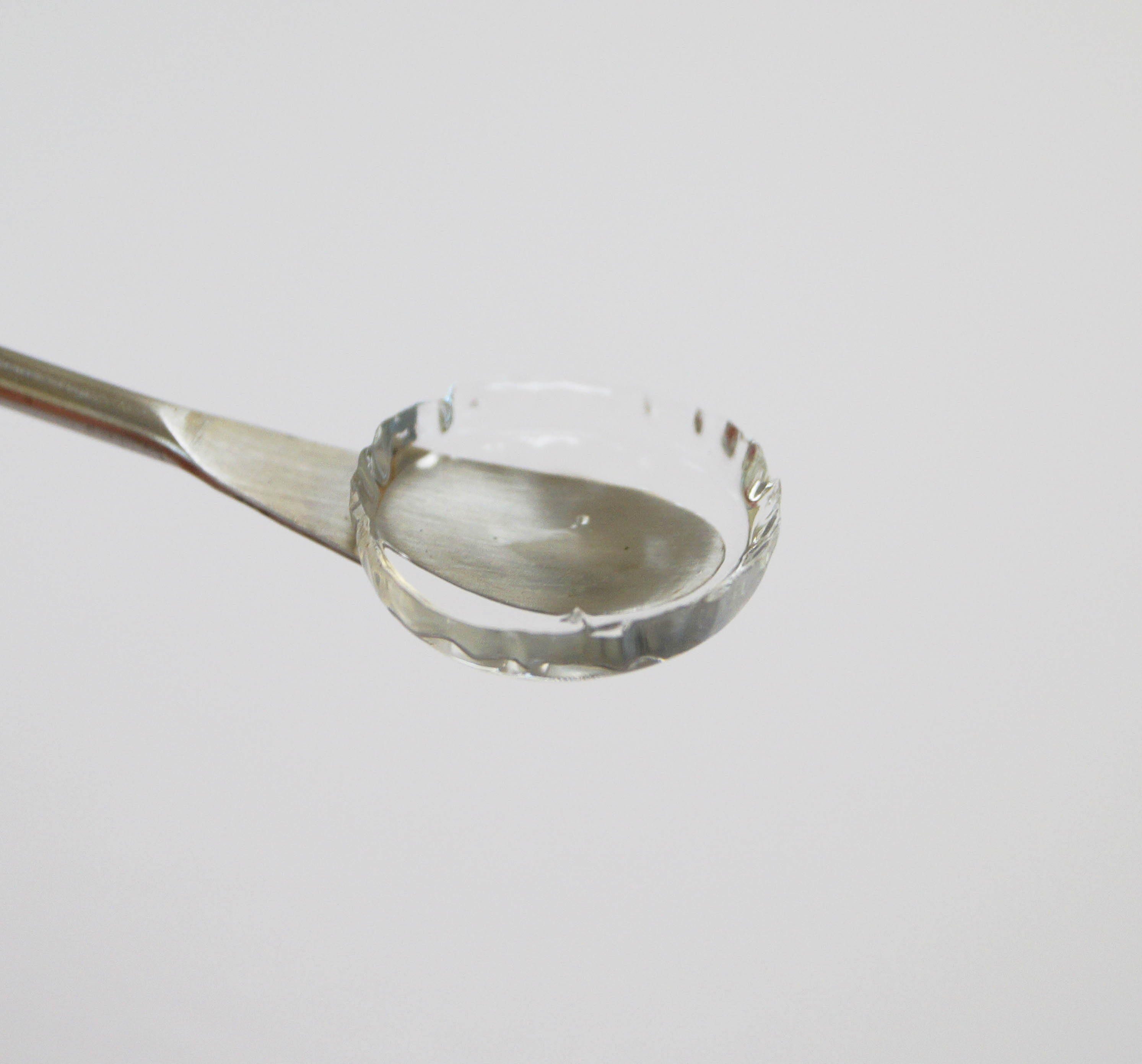
Introducing HyStem Hydrogels
Advanced BioMatrix, a leading company in the field of 3D applications for tissue culture and cell assay, offers a range of HyStem hydrogels tailored for stem cell culture. These hydrogels are designed to provide an optimal environment for stem cells to thrive, leading to enhanced research outcomes.
The incorporation of hyaluronic acid into the hydrogel matrix ensures a physiologically relevant environment for stem cells. Hyaluronic acid is a major component of the extracellular matrix and is recognized by specific cell surface receptors. By culturing stem cells in a hyaluronic acid-based hydrogel, researchers can provide the necessary cues for cell adhesion, migration, and differentiation.
HyStem
HyStem hydrogel is a "blank-slate" matrix that allows researchers to know the exact biomaterial composition in their hydrogels. Say goodbye to unknown black-box hydrogels and embrace HyStem, containing Thiolated Hyaluronic Acid and PEGDA in physiological conditions.
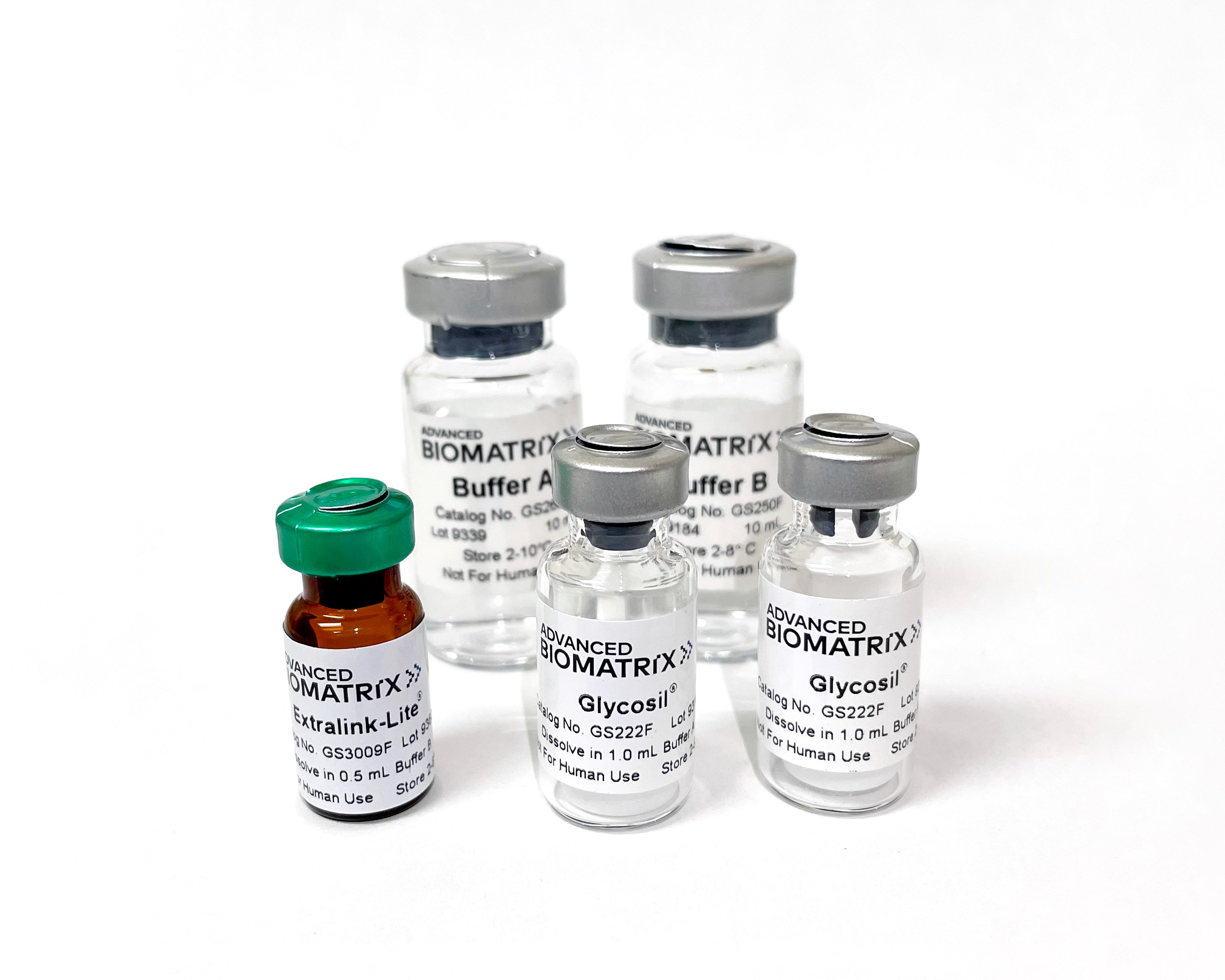
HyStem-C
HyStem-C is a specialized hydrogel that incorporates additional extracellular matrix (ECM) proteins, such as collagen or fibronectin, to enhance the bioactivity of the matrix. These ECM proteins provide essential cues for stem cell adhesion, migration, and differentiation, further improving the physiological relevance of the culture system.
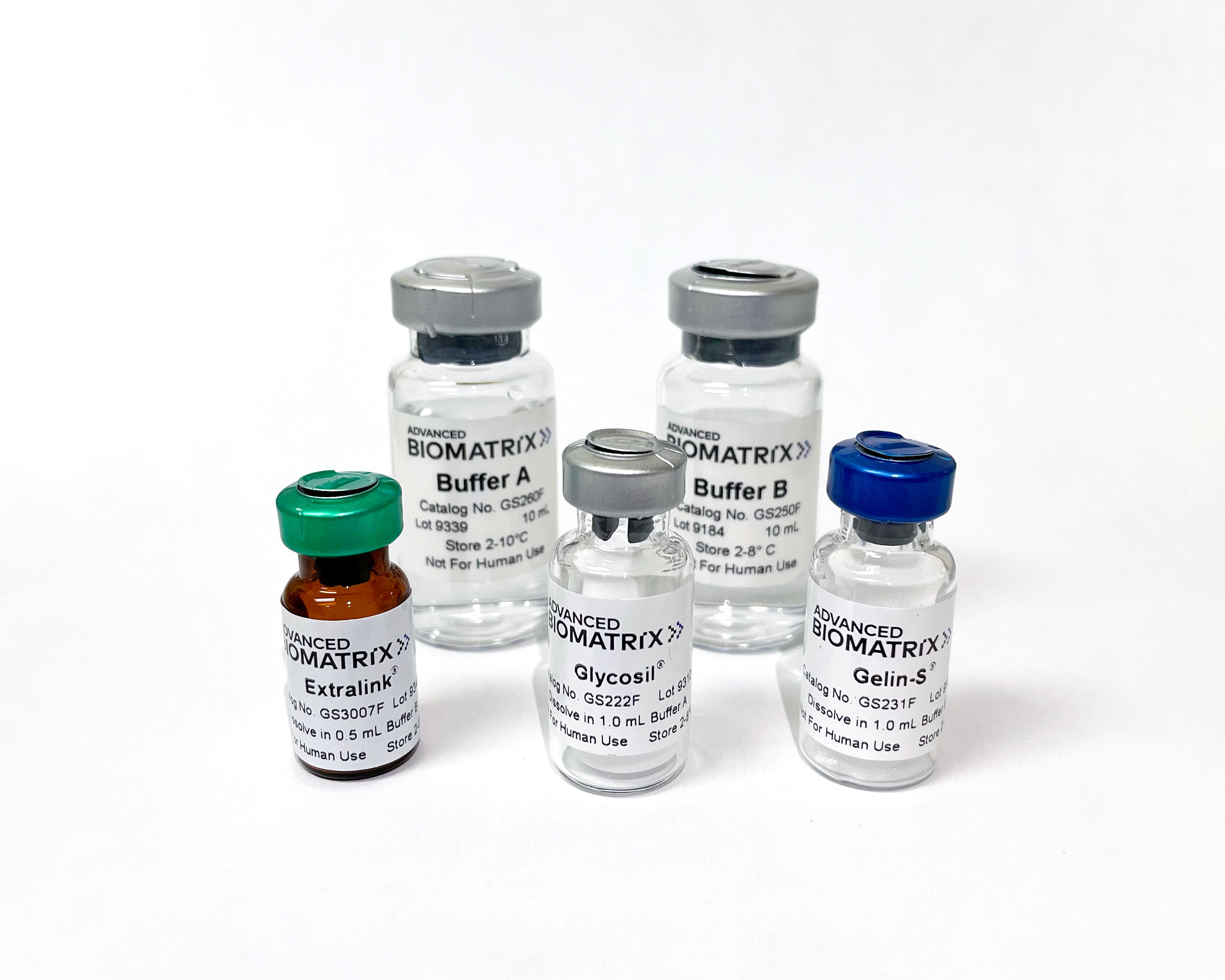
HyStem-HP
For researchers working with drug or cell delivery applications, HyStem-HP offers a unique hydrogel formulation. This low-viscosity hydrogel allows for easier encapsulation of cells and minimizes shear stress during the gelation process, ensuring high cell viability and maintaining the stem cell phenotype. HyStem-HP contains thiolated hyaluronic acid for a physiologically relavant environment, thiolated gelatin for improved cell attachment, and thiolated heparin for controlled drug/cell release.
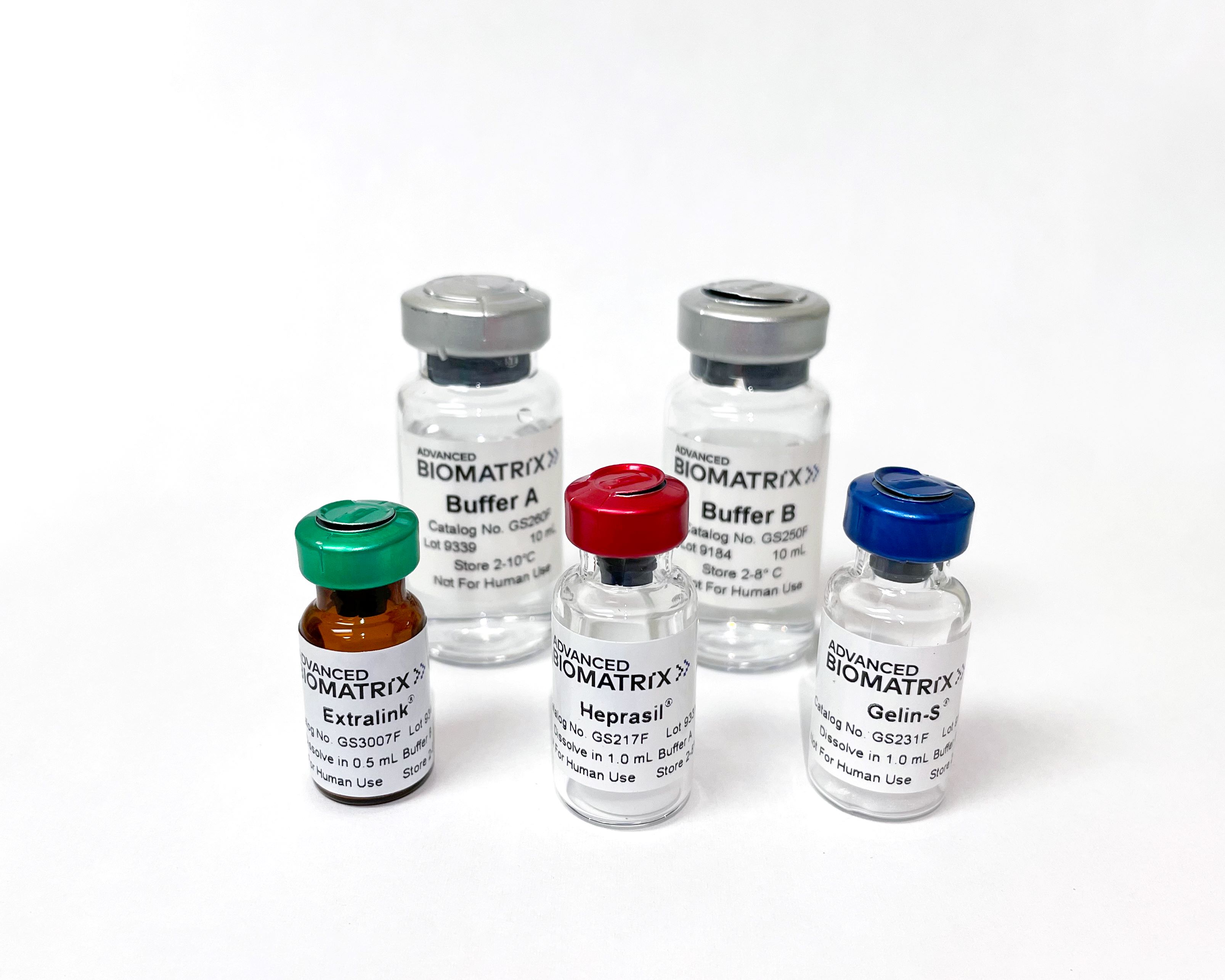
PhotoHA - Methacrylated Hyaluronic Acid
To better control or tune the stiffness of 3D hyaluronic acid hydrogels, use PhotoHA Methacrylated Hyaluronic Acid.
PhotoHA can be photocrosslinked with a broad range of parameters, or solubilized at different concentrations to make hydrogels that mimic native tissue stiffness.
PhotoHA comes in a "stiff" and "soft" version, allowing you to explore the role of substrate stiffness on cells.
The versatility of PhotoHA allows researchers to prepare hydrogels at various concentrations and customize the gel stiffness to match their experimental requirements. Whether you are exploring ex-vivo engineering of cartilage tissue, mesenchymal stem cell carriers in cartilage repair, or investigating the effects of matrix stiffness on cell phenotype and function, PhotoHA is the ideal choice for your hydrogel research needs.
